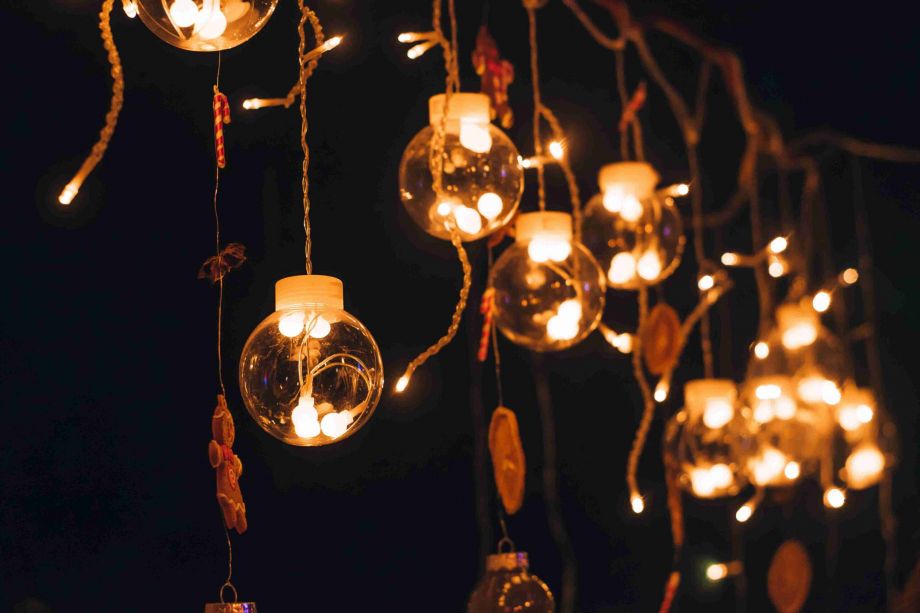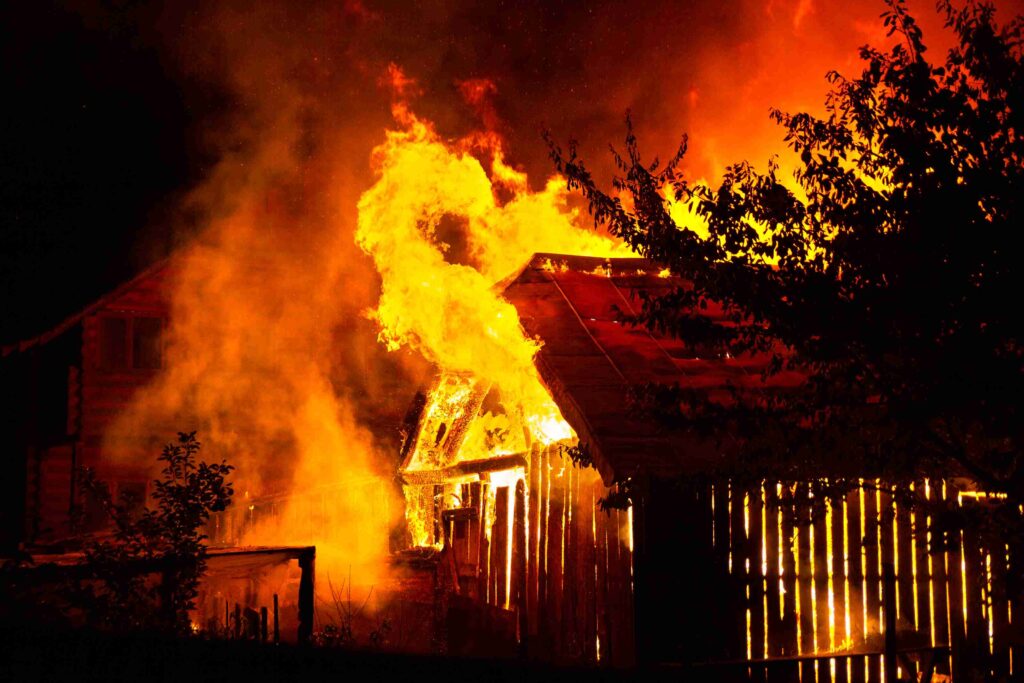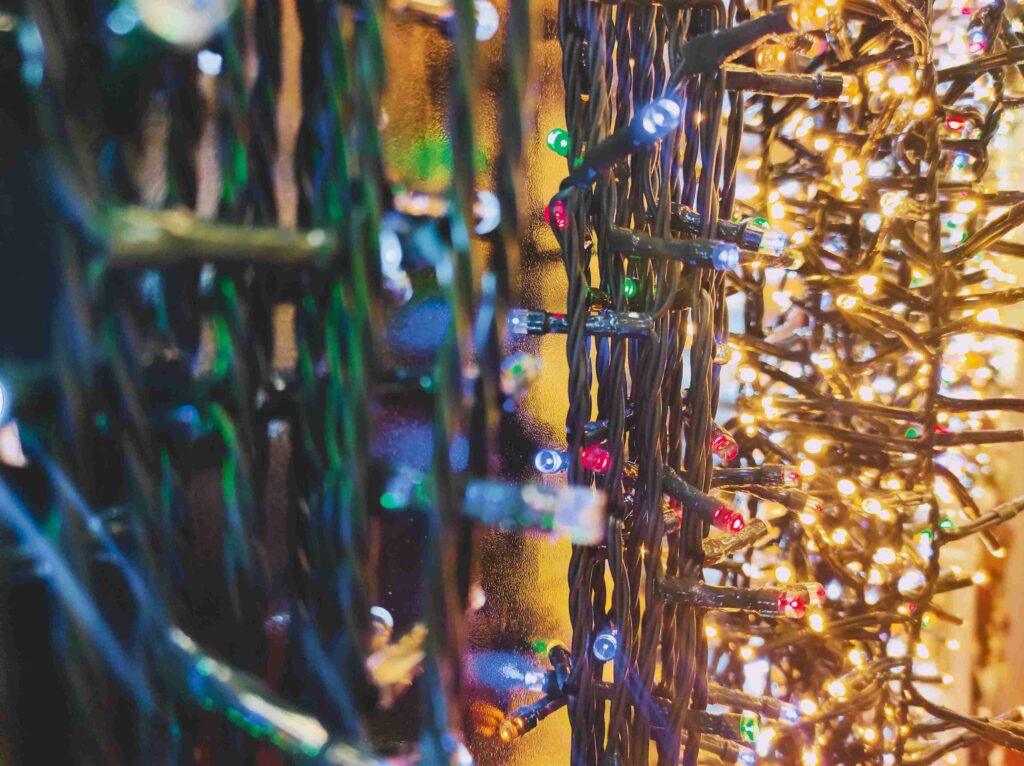
Can Christmas Lights Catch On Fire? (Solved)
The holiday season just wouldn’t feel the same without twinkling Christmas lights. They make everything feel cozy, magical, and picture-perfect.
But along with all that sparkle, there’s usually a tiny voice in the back of your head wondering if these lights actually catch on fire.
It’s a fair question, and the short answer is yes, they can.
But the good news is, it’s not super common if you use them safely and take basic precautions.
In this post, we’ll explain how Christmas lights can catch on fire, signs it might be unsafe and how to avoid all that.
Do Christmas Lights Catch On Fire?
Christmas lights can catch on fire, but the risk is usually tied to misuse, poor quality, or age.
Christmas lights are electrical devices, and just like phone chargers or extension cords, they can overheat if pushed too hard.
The wires carry current, and if those wires are damaged, cheap, or overloaded, things can heat up. Add in a dry Christmas tree or a stack of wrapping paper, and you’ve got a recipe for trouble.
But don’t panic. Millions of households light up every December without incidents!
Fires caused by Christmas lights are not an everyday occurrence, but they do happen. According to fire safety reports, holiday decorations spark thousands of house fires each year, and lights are a part of that mix.

Common Fire Hazards To Watch For
Now, let’s talk about how Christmas lights can catch on fire.
There are a few specific troublemakers that keep showing up in fire incident reports. And honestly, most of them are easy to avoid once you know what to look out for:
#1 Old Lights With Frayed Wires
You know that tangled ball of lights you’ve been reusing since the early 2000s?
Yeah, those can be sketchy. Over time, wires get brittle, sockets crack, and insulation wears down. Once that protective coating starts breaking, the electrical current inside can arc, spark, or just get way too hot.
Also Read: Christmas Lights Keep Blowing Fuse
Even tiny nicks in the wire can be risky because they expose the copper underneath.
The fix is simple: inspect your lights before using them each year.
If you see cracked wires, broken bulbs, or anything that looks suspicious, toss them. It’s not worth saving a couple of bucks if it means putting your home at risk.
#2 Too Many Strands Plugged Together
We’ve all been tempted to go full Clark Griswold and string enough lights to be seen from space.
But plugging too many strands into one outlet or extension cord is asking for trouble.
Electrical circuits are designed to handle only so much current. Overloading them can make wires heat up, trip breakers, or in the worst case, start a fire.
A lot of modern LED sets let you connect more strands safely than older incandescent ones, but there’s still a limit.
So always check the packaging or instructions. If you can’t find them, play it safe and use a power strip with built-in surge protection and don’t go overboard.

#3 Using Indoor Lights Outside
Not all Christmas lights are the same. Some are designed to handle rain, snow, and cold weather, while others are strictly for cozy indoor use.
Using indoor Christmas lights outside can make them catch on fire.
How? Moisture can seep into the sockets and wiring which can cause shorts or sparks.
So the next time you’re shopping for lights, always look for the label. It will say “indoor” or “indoor/outdoor.” If you’re not sure, assume they’re indoor-only.
Outdoor-rated lights have extra protective coatings to handle the elements.
Also Read: Are Christmas Lights Waterproof?
#4 Dry Christmas Trees That Can Ignite Easily
A fresh Christmas tree looks gorgeous, but once it dries out, it basically turns into a giant piece of kindling. Combine that with hot lights, and you’ve got a dangerous combo.
A dry tree can go up in flames shockingly fast – it’s the stuff of fire safety demonstration videos.
If you love a real tree, keep it watered.
Also check the water level daily, and make sure it never dries out.
As soon as the tree starts dropping needles like crazy, it’s time to take it down. If that feels like too much hassle, artificial trees are a solid option.
Signs Your Christmas Lights Might Be Unsafe
Okay, so how do you know if your Christmas lights are heading into danger zone territory? There are a few warning signs you should pay attention to:
- Wires that feel hot to the touch.
- Flickering bulbs or strands that randomly go dim.
- Exposed copper or cracked plastic around the sockets.
- A faint burning smell or tiny sparks when plugging them in.
If you notice any of these, don’t mess around. Unplug the lights immediately and replace them.
Christmas lights are cheap compared to dealing with smoke damage or worse.
Also Read: What Gauge Wire For Landscape Lighting?
Are LED Or Incandescent Christmas Lights Safer?
If you’re still rocking those old-school incandescent Christmas lights, it might be time to upgrade.
Incandescent bulbs work by heating up a filament until it glows, which means they generate quite a bit of heat. That heat can dry out a Christmas tree faster and raise the risk of fire if the bulbs are pressed against something flammable.
LED lights, on the other hand, stay cool to the touch.
They use way less electricity, last longer, and don’t strain your circuits nearly as much. They also let you safely connect more strands together.
On top of that, LEDs come in every style imaginable, so you’re not sacrificing looks for safety.
So, if you’re wondering which is safer, LEDs win hands down. They’re basically the modern upgrade we should all be using.
Bottom Line
Christmas lights are safe when you treat them with a little respect.
Fires linked to holiday decorations do happen, but the causes are usually preventable: old, frayed lights, overloaded outlets, indoor lights outside, or dry Christmas trees.
By checking your lights, using the right type, and turning them off when you’re not around, you can reduce the chances of it catching on fire.
And if you have incandescent Christmas lights, consider changing to LEDs.







